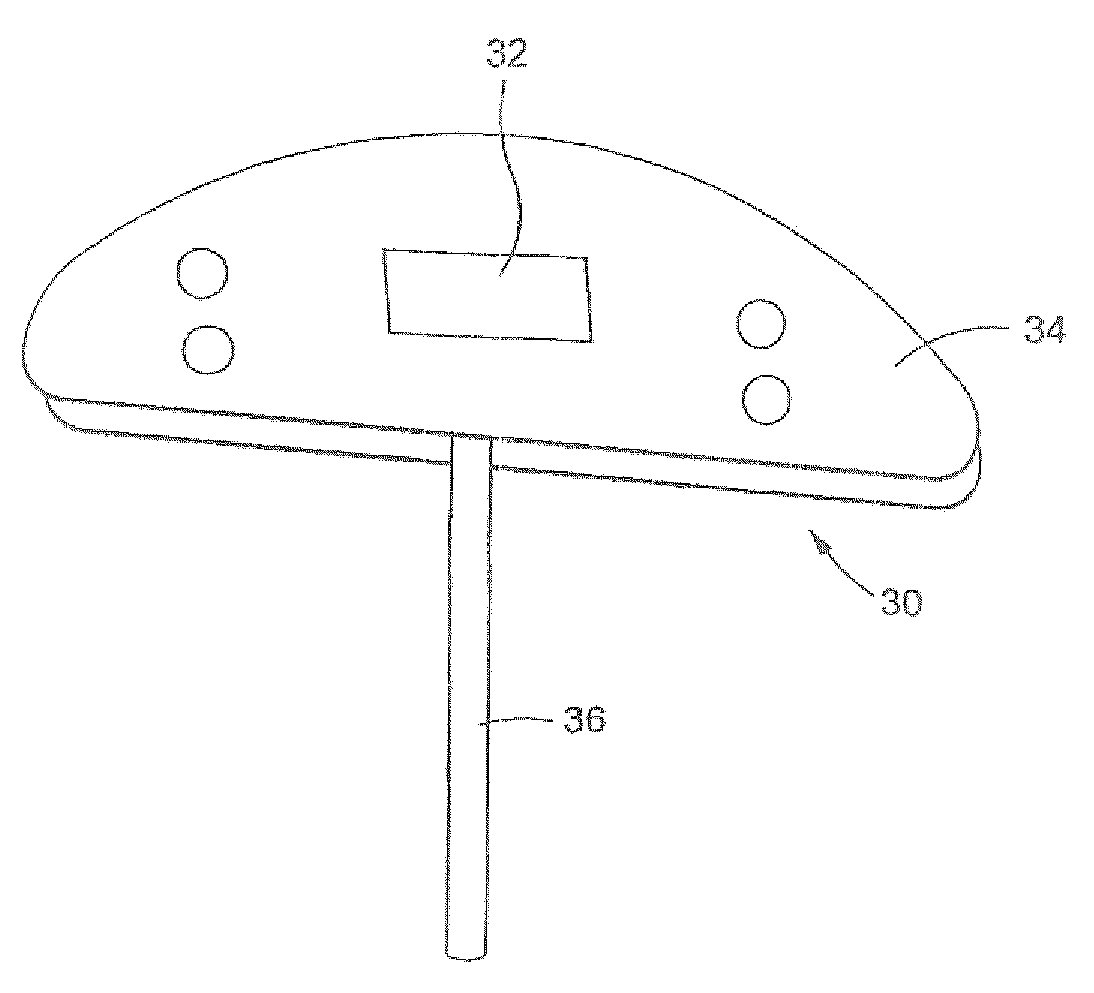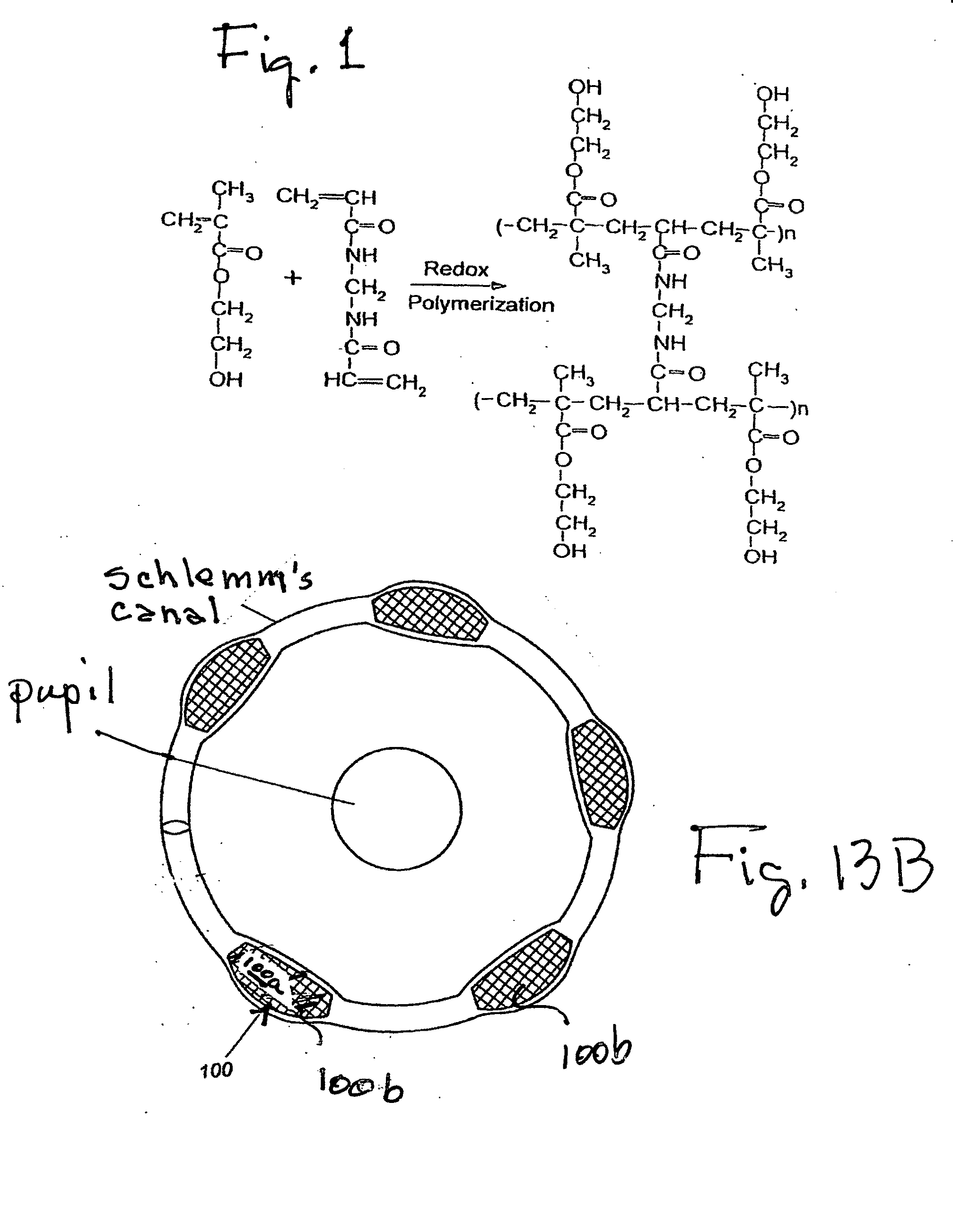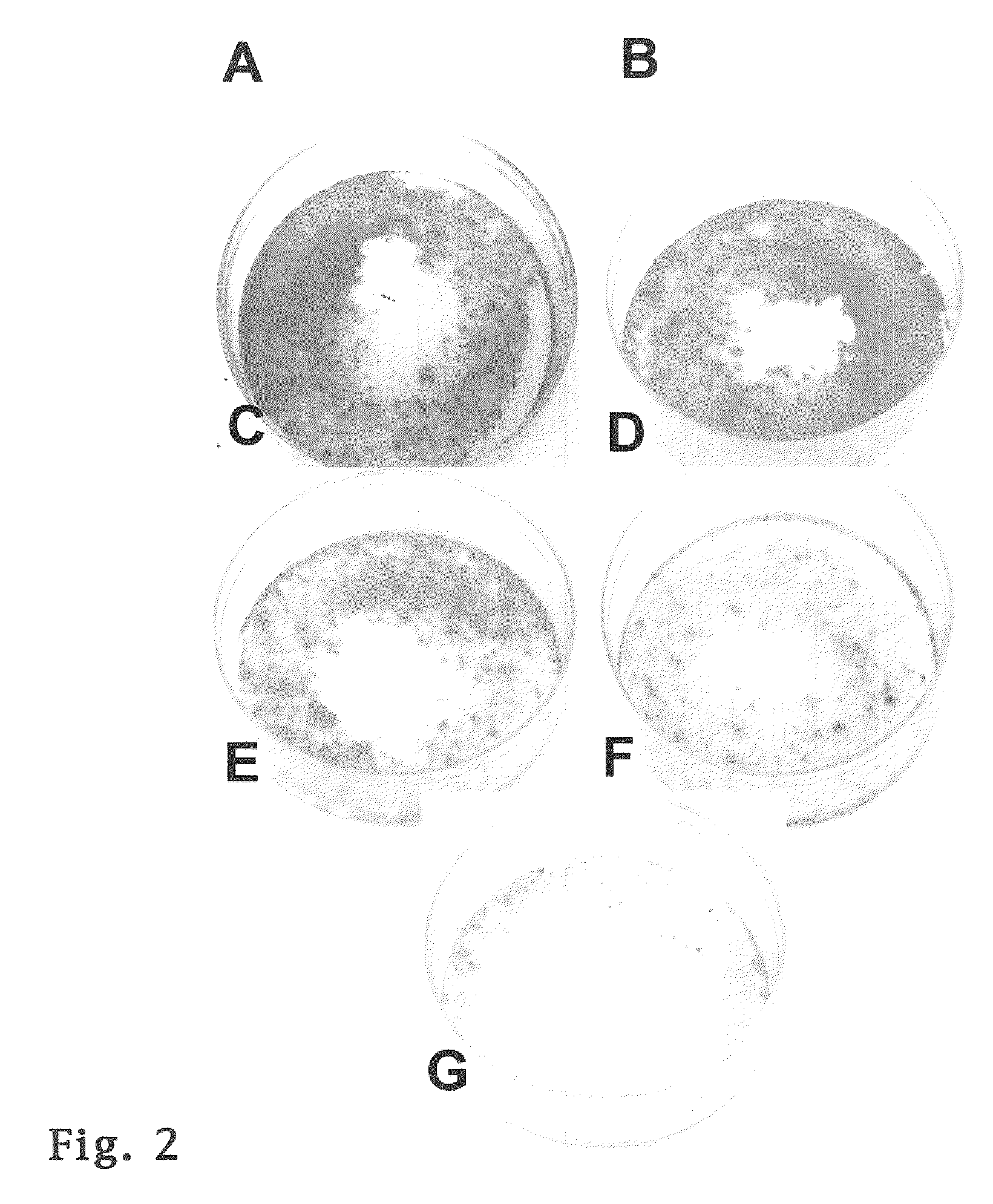Device for delivery of antifibrotic agents & method
a technology for delivering antifibrotic agents and suppositories, which is applied in the direction of prosthesis, eye treatment, suppositories delivery, etc., can solve the problems of unsatisfactory post-operative outcomes, significant reduction of surgical success at the wound site, and unsatisfactory pharmacological attempts to prevent fibrosis following glaucoma surgery
- Summary
- Abstract
- Description
- Claims
- Application Information
AI Technical Summary
Benefits of technology
Problems solved by technology
Method used
Image
Examples
experiment 1
Inhibition of Cell Proliferation by Mitomycin C Incorporated Into P-Hema Hydrogels
[0061]In this Experiment 1 a device including a P-HEMA matrix was tested that releases low concentrations of mitomycin-C over a 3-week period using an in vitro model.
MATERIALS AND METHODS
[0062]Materials: Neutral buffered formalin, toluidine blue, hematoxylin and eosin solution, sodium dodecyl sulfate, mitomycin C (Streptomyces caespitosus), reagents for tissue culture (culture medium, trypsin, antibiotics) and reagents for hydrogel synthesis (2-hydroxyethyl methacrylate, N, N′-methylene-bisacrylamide, N,N,N′,N′-tetramethylethylenediamine, and ammonium persulfate) were purchased from Sigma / Aldrich (St. Louis, Mo.). Tissue culture dishes (60 mm diameter) were from Corning-Costar (Corning, N.Y.). COS-1 cells were obtained from the American Type Culture Collection (Manassas, Va.). Early passage human conjunctival fibroblasts were established in 1994 from a biopsy sample of a 43 year old white male. The pri...
experiment 2
SUMMARY OF EXPERIMENT 2
[0081]In order to test the hypothesis that a slow release drug delivery system using P(HEMA) loaded with Mitomycin C would decrease the fibrosis, a glaucoma drainage device was created in the laboratory that consisted of a 13 mm 10 mm P(HEMA) plate loaded with MMC (2 mg / dry weight of the polymer) attached to a silicone tube. This plate and tube were implanted into the rabbit eye (using standard surgical techniques). The results demonstrated significant reduction in the fibrosis with a resulting avascular bleb formation at the end of 1 week. This experiment proved that the concept of slow release drug delivery system worked in the rabbit model.
DEVICES
[0082]FIG. 7 schematically depicts one embodiment of my ophthalmological device identified by the numeral 10. The ophthalmological device 10 may be used to treat glaucoma and includes a distribution plate 12 carrying an antifibrotic agent and a tube 14 attached to the plate 12 near an inner end 14b so fluid exiting...
experiment 3
[0090]Incorporation of the p(HEMA) Drug Delivery System into a Commercial GDD
[0091]The next set of experiments concentrated on the preparation and standardization of p(HEMA) disks loaded with a lower concentration of MMC that could be attached to a commercially available glaucoma drainage device, such as the Ahmed Glaucoma Valve (New World Inc., Rancho Cucamonga, Calif.). Semicircular disks of p(HEMA) (5 mm×6 mm) with incorporated MMC (0. 173 mg MMC / g dry gel) were prepared and then attached to the lower half of a commercial Ahmed valve plate (model FP-7), as shown in FIG. 14C, modified for implantation. The arrow shows the p(HEMA) polymer with incorporated MMC. The incorporated MMC imparts the pink color to the polymer. The tube through which aqueous fluid drains is being held by forceps in this photograph FIG. 14C. The release of MMC from this device was measured using a syringe pump to inject sterile water through the tubing of the device. The injection rate was kept constant to ...
PUM
 Login to View More
Login to View More Abstract
Description
Claims
Application Information
 Login to View More
Login to View More - R&D
- Intellectual Property
- Life Sciences
- Materials
- Tech Scout
- Unparalleled Data Quality
- Higher Quality Content
- 60% Fewer Hallucinations
Browse by: Latest US Patents, China's latest patents, Technical Efficacy Thesaurus, Application Domain, Technology Topic, Popular Technical Reports.
© 2025 PatSnap. All rights reserved.Legal|Privacy policy|Modern Slavery Act Transparency Statement|Sitemap|About US| Contact US: help@patsnap.com



